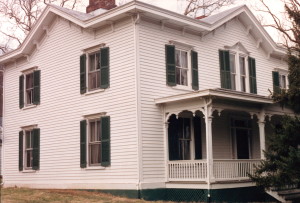The log farmhouse… part 4
Here’s the backside of the timber-frame addition that I added this farmhouse.
BUT… I’d like to turn your attention to the little log cabin seen off to the right this photo. That little cabin holds a special place in my heart.
I’m not certain if I’d call it my first log cabin, but it was certainly a pivotal project for me. Over the next day or two I’ll tell you all about it.
Originally posted 2015-04-30 15:07:01.














